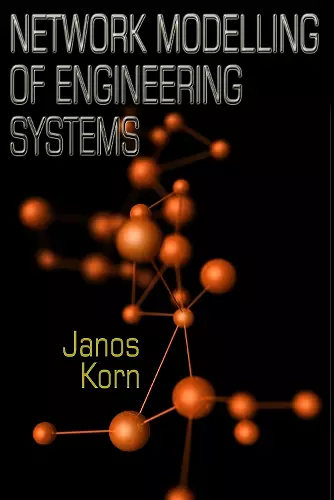Network Modelling of Engineering Systems
Format:Paperback
Publisher:Troubador Publishing
Published:1st Apr '12
Currently unavailable, and unfortunately no date known when it will be back

The book is an integrated, unified approach to modelling engineering systems including control system and thermal effects for the computation of thermal transients and will appeal to all readers interested in a novel approach to the fundamentals of engineering systems. The classification of variables into through (force, current…) and across (speed, voltage…) leads to the construction of multidisciplinary networks which act as the unifying agent for modelling engineering systems from mechanical, electrical, fluids and thermodynamics disciplines. Network models admit non-linear functions such as relations involving temperature and entropy flow. A general treatment of energy conversion is given which models dissipation and heat transfer as external to internal and internal to internal energy converter. It then becomes possible to compute the increase of entropy arising from dissipation and temperature transients illustrating the operation of the 2nd law of thermodynamics. The performance of signal converting devices are described. Differential equations of change of state are derived from network models including those of control systems using topology which enable computations of steady state and dynamic conditions of multidisciplinary, engineering systems. Stability of systems is considered followed by the introduction of an aspect of systems design for countering environmental disturbances, for example. The notion of ‘one-dimensional variable’ is introduced leading to ‘field representation’ of engineering systems. A general theory of ‘engineering systems components’ is developed which through simplifications, describes ‘environments’ and ‘amplifiers’. Aspects of ‘analytical mechanics’ of Lagrange are used for the development of differential equations of change of state which describe, for example, the performance of capacitances or inductances in motion. The method presented in the book shows the points at which ‘conventional science’ of physics enters ‘systems science’ i.e. at the stage of network elements. It shows an integrated representation of multidisciplinary control systems and through the notion of ‘network models’ brings these systems closer to the ‘physics of situations’. This and many worked examples facilitate understanding of the subject matter. Teaching of the topics presented in the book was carried out for a number of years and many examination papers and examples are available. The method encourages application of computers for analysis and design.
ISBN: 9781848768048
Dimensions: unknown
Weight: unknown
560 pages